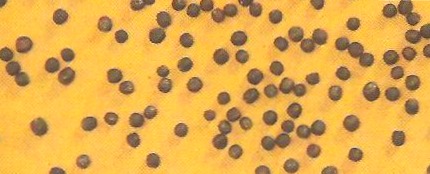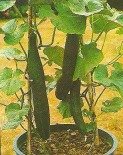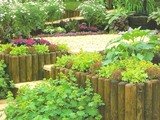|
Planting Seedlings from the Comfort of your Own Home
Planting seedlings or growing vegetables from seeds isn’t really my style. I prefer buying plants as starts from my local nursery and simply transplanting them into my vegetable garden. But if you have the time and the patience, then there is nothing wrong with planting seeds. The process isn’t difficult even when you’re planting vegetable seeds indoors. The only thing is that you may have to wait awhile before you can see results. (That is, shoots from the seeds). So below is all you’ll need for planting seeds indoors… ContainersMost containers are appropriate for sowing seeds indoors. In fact, any container with holes at the bottom can be used. However, it’s wise to avoid the wooden containers. These attract insects and organisms which can bring diseases. And once these organisms are set in the wood of the container, they’re difficult to get rid of. So my advice is to stick to the plastic containers. CompostCompost should be used as the growing medium when planting seedlings indoors. You can either make your own compost or purchase multi-purpose compost from a home and garden store near you (or online). Once you have compost in your possession, you can fill the container with it and gently firm it (not compress it) with a piece on board. Ensure that the surface layer of the compost is about ½ of an inch below the top of the container. Next you should sprinkle the compost with water the day before you sow the seeds. Don’t completely drench the compost. The purpose of wetting it is to allow the seeds to cling easily to the soil and provide some moisture so that the seeds can germinate. CoveringThe day after sprinkling the compost with water you should sow the seeds and cover them. Sow the seeds by simply sprinkling them on the surface of the compost. Then use compost or vermiculite to cover the seeds. This is appropriate only for large seeds. (In other words, don’t cover small seeds). Large seeds should be covered to a depth which is 2 times the diameter of the seeds. This provides the seeds with an optimum depth when they begin to germinate. The compost should also be sifted through a sieve when covering the seeds. This allows the cover to be light and loose so that emerging shoots can easily push through to the surface. After all of the above is done you should cover the entire container with brown paper and a sheet of glass. The paper bag and sheet of glass will act similarly to a greenhouse and have the same effect. WarmthSeeds need warmth to germinate. In fact they need between 65 to 70 degrees Fahrenheit. Thus you’ll need to place the tray or container with the compost and seeds on a window sill. The room should also be at least 65 degrees Fahrenheit as well. Light and WateringRemember that the container will be covered by the brown paper and the glass. However these should be removed gradually as soon as shoots appear from beneath the surface of the compost. At first the brown paper bag should be removed completely and the sheet of glass should be propped up over the container. Then after a few days the glass should be removed completely and container should be removed to a site that is not exposed to the sunlight. You don’t want the little seedlings to be exposed to that harsh sun as yet. They need time to strengthen and adjust. However when this is happening ensure that the compost never dries out. The plant will need the water to grow. Pricking OutAs soon as the leaves of the shoots open they should be pricked out of the container. At this point the plants are getting bigger and would need more space that the container could provide. Therefore, they should be removed from the container and placed in trays of compost. They should also be set 1 – 1½ inches apart. You should also keep the trays in the shade after transplanting the seedlings and the compost should also be kept moist. Planting Seedlings (Hardening Off)When the seedlings recover from being transplanted they must be prepared for the life outdoors. Thus you should place the trays on a balcony or porch for a couple of hours each day. As the time proceeds you can increase the time they spend outdoors. After about a couple of weeks the seedling will be ready to be placed out in the garden. Basically that was the entire process of planting seedlings indoors. Like I said earlier I think planting seedlings is too time-consuming. My schedule and my mindset don’t permit me to plant seeds. I simply buy the starts from the nursery. But if planting seedlings is right for you then I hope the information above would be helpful. OR
|










